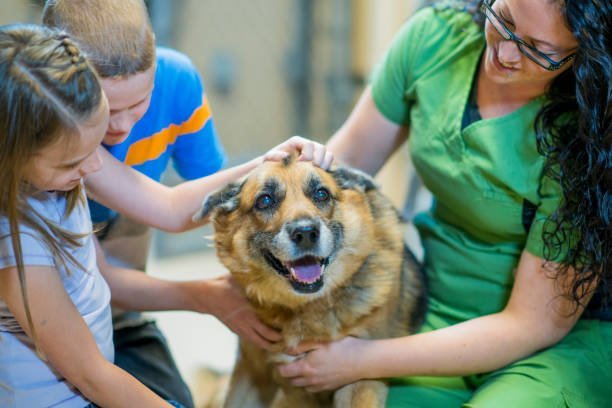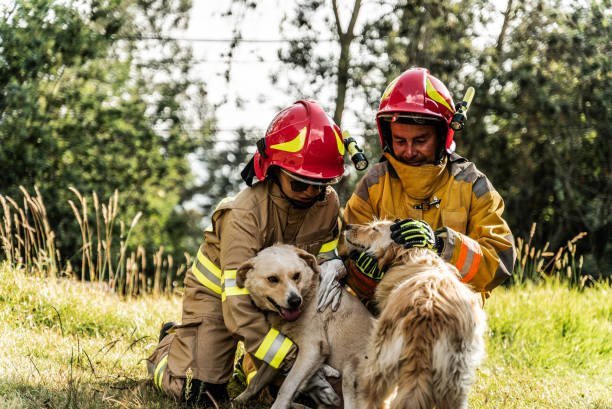Why do some dogs end up in rescue shelters?

Introduction:
In this article, we delve into a poignant question that lies at the heart of canine welfare while many dogs enjoy loving homes and companionship, a significant number find themselves in rescue shelters, awaiting a second chance at a better life. This complex issue prompts us to explore the myriad of reasons behind canine homelessness and abandonment.
In examining these reasons, we uncover a range of circumstances that lead to dogs being relinquished or left without homes. These can include changes in their owners’ circumstances, economic challenges, behavioral issues, breed-specific misconceptions, and the unfortunate consequences of overbreeding and puppy mills. Understanding the root causes is essential not only to raise awareness but also to address the underlying issues and work towards a brighter future for dogs in need.
Owner Circumstances and Life Changes
Dogs may end up in rescue shelters due to various owner-related circumstances and life changes. One common reason is relocation or changes in housing situations that do not allow pets. Owners facing eviction or moving to rental properties with no-pet policies often find themselves with limited options, leading to the surrender of their dogs to shelters.
Life events such as divorce, illness, or death can disrupt a dog’s living situation. When owners are unable to care for their pets due to these challenging life changes, they may turn to rescue shelters as a last resort, hoping to find a safe and loving environment for their dogs.
Economic Challenges and Financial Strain
Economic challenges and financial strain are significant factors contributing to dogs ending up in rescue shelters. Dogs require resources for food, veterinary care, grooming, and other essential needs. When individuals or families face financial difficulties, they may struggle to provide adequate care for their pets.
In some cases, owners may be unable to afford necessary veterinary treatments for their dogs’ medical conditions, leading to health-related issues. When faced with mounting bills and an inability to meet their dogs’ needs, owners may surrender their pets to rescue shelters, hoping that these organizations can provide the care and attention their dogs require.
Behavioral Issues
Behavioral issues in dogs can lead to misunderstandings and, ultimately, their relinquishment to rescue shelters. Some owners may lack the knowledge or resources to address behavioral problems, which can include aggression, excessive barking, destructive behavior, or house soiling. These issues can strain the owner-patient relationship.
Misunderstandings about dog behavior and unrealistic expectations may also contribute to dogs ending up in shelters. Owners who do not fully comprehend breed-specific traits or the time and effort required for training and socialization may become overwhelmed and seek shelter placement for their pets.
Moreover, behavioral issues can sometimes result from past traumas or neglect, making it essential for rescue shelters to address these issues through rehabilitation and training programs to increase a dog’s chances of finding a new home.
Breed Misconceptions and Stereotypes
Breed misconceptions and stereotypes can contribute to dogs ending up in rescue shelters. Certain breeds or types of dogs may be unfairly stigmatized due to misconceptions about their behavior or temperament. This can lead to people acquiring these dogs without a full understanding of their needs, resulting in challenges that they are ill-prepared to address.
For example, breeds like Pit Bulls have often been unfairly associated with aggression, despite their potential for being affectionate and loyal companions. When individuals adopt these breeds without proper research or consideration, they may struggle to manage them effectively, leading to relinquishment.
Stereotypes surrounding size, appearance, or breed-specific legislation can also create barriers for owners. For instance, landlords or housing policies may discriminate against certain breeds or sizes, forcing owners to make difficult choices about their pets’ housing or ultimately surrendering them to shelters.
Overbreeding and Puppy Mills
Overbreeding and the operation of puppy mills contribute significantly to the overpopulation of dogs and the high intake rates at rescue shelters. Puppy mills are commercial breeding facilities that prioritize profit over the well-being of dogs. These facilities often subject dogs to overcrowded and unsanitary conditions, leading to health problems and behavioral issues.
Dogs from puppy mills are frequently sold to unsuspecting buyers who are unaware of the dogs’ origins and potential health issues. As these dogs grow older and develop problems, owners may choose to surrender them to rescue shelters due to the financial burden of medical care or the challenging behavioral issues resulting from their early experiences.
Overbreeding also contributes to the overpopulation of certain breeds, especially when breeders prioritize quantity over quality. Excessive breeding leads to an excess of puppies in the market, which can result in a surplus of dogs and ultimately more surrenders to rescue shelters.
Community and Environmental Factors
Community and environmental factors can play a significant role in dogs ending up in rescue shelters. The availability of pet services, such as affordable veterinary care and spay/neuter programs, can influence pet ownership in a given area. In communities with limited access to these services, dogs may be less likely to receive essential care, leading to health issues and potential shelter surrender.
Environmental factors, such as natural disasters or economic downturns, can also impact pet owners’ ability to care for their dogs. During disasters, people may be forced to evacuate quickly and may be unable to bring their pets with them, resulting in temporary sheltering or permanent surrender. Economic downturns can lead to job loss and housing instability, making it challenging for owners to provide for their dogs.
The presence or absence of animal welfare organizations and rescue resources within a community can influence the options available to owners facing difficult circumstances. Communities with strong support networks may offer alternatives to surrender, such as temporary fostering or assistance with pet care expenses, reducing the number of dogs entering shelters.
Conclusion:
I hope this exploration of the factors contributing to why some dogs end up in rescue shelters has shed light on the complexities of this issue. It is clear that a combination of owner-related challenges, including life changes, financial strain, and misunderstandings about canine behavior, can lead to relinquishment. Breed stereotypes, overbreeding, and the operation of puppy mills also significantly impact shelter intakes. Moreover, community and environmental factors, including access to pet services and support networks, play a crucial role in determining the fate of dogs in difficult situations.
Addressing the root causes of dogs ending up in rescue shelters requires a multifaceted approach, including education on responsible pet ownership, spaying/neutering initiatives, and the enforcement of animal welfare laws. By tackling these issues at their source, we can strive to reduce the number of dogs in shelters and work towards a future where every dog enjoys a loving and permanent home.










Post Comment